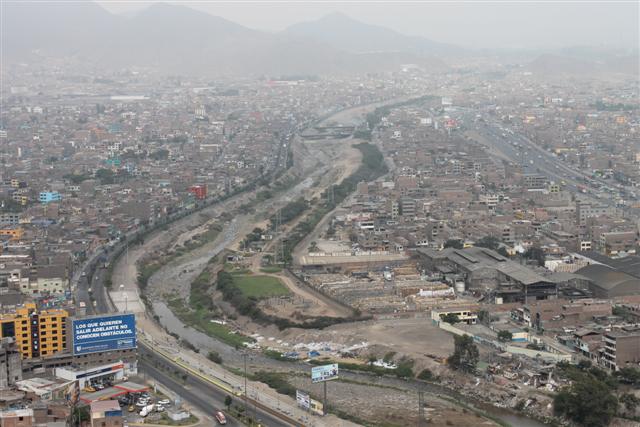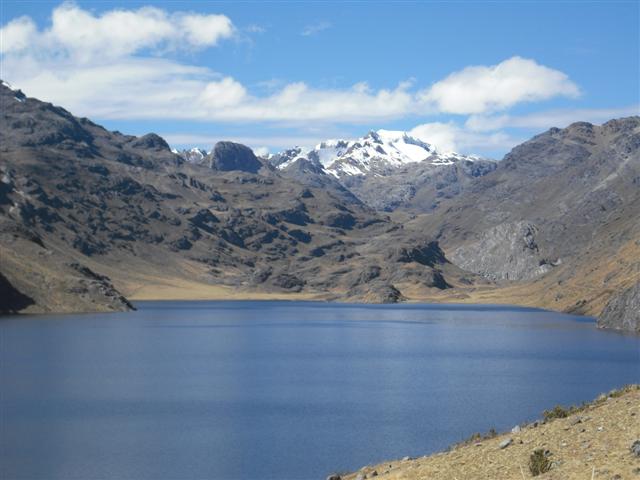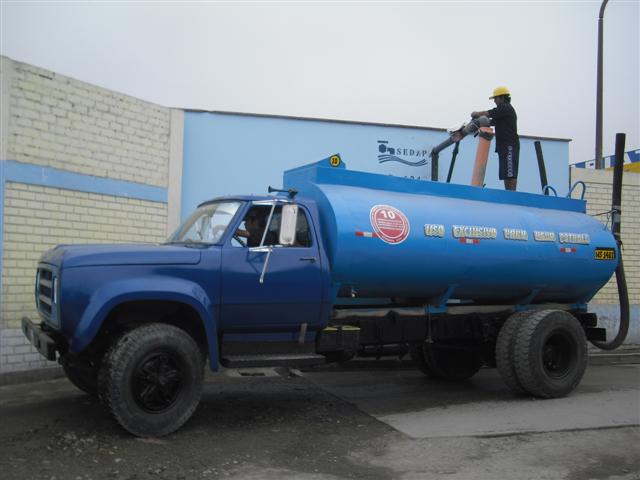

Lima, Rio Rimac. Photo: C. León 2011

Yuracmayo lake in the mountains of Lima (4355 m ASL). Photo: C. León 2011
The Metropolitan area of Lima and Callao is characterised by a number of features typical of emerging megacities, such as:
The diversity of the various parts of Lima also results in the fact that, for different parts of the city, potentially different solutions (e.g. for wastewater treatment technologies) out of the multitude of potential solutions might be optimum. Therefore, locally conducive solutions have to be found, which, at the same moment, also contribute to an overall favourable water management concept.
With regard to water supply and sanitation, Lima is characterised by the following: At present, the water supply network covers 80,6 % of the population of Lima, leaving 19,4 % of the population (mainly in the hilly parts of the town) without access to the drinking water network. About 77 % of the population is connected to the public sewer network. Only about only 17 % of the wastewaters receive some form of treatment. The major part of wastewater is discharged either in the rivers or directly into the Pacific Ocean, only 5 % of the treated wastewaster is reused for irrigation.
Strong interactions with the energy system lie not only in the inherent need for energy for water pumping and wastewater treatment (with important implications on operational costs), but even more so in the joint use of reservoirs (affected by climate change and with conflicting usage patterns) for water supply and for energy production.
The table below shows that, in difference to other southamerican megacities, Lima has severe problems in respect to availability of water resources for drinking purposes.
| City | Population (Mill.) |
Water production (m3/s) | Water reserves (Mill. m3) |
Reserves per capita(m3/inh.) |
Precipitation (mm/year) |
Non-revenue water (%) |
| Rio de Janeiro | 9 | 52 | (*) | 0 | 1170 | 57 |
| Sao Paulo | 25 | 90 | 2073 | 83 | 1500 | 37 |
| Santiago de Chile | 5.9 | 24 | 900 | 153 | 384 | 29 |
| Bogotá | 6.5 | 25 | 800 | 123 | 800 | 35 |
| Lima | 8.6 | 20 | 282 | 33 | 9 | 35 |
* has no problems with water sources because of large river flow and
high precipitations.
Source: Annual Reports of main Water and Sanitation Companies of South America.

Water supply by tank lorries in periurban areas of Lima. Photo: C. León 2011